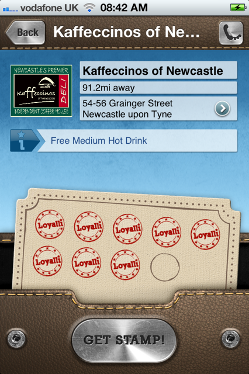Blog posts tagged marketing
What technology means for the marketing mix
 Marketing has evolved as technology has evolved. Billboard ads and newspaper adverts feel somewhat outdated. Television, the internet and smart phones are taking over the marketing world, forcing marketers to shake up their strategies.
Marketing has evolved as technology has evolved. Billboard ads and newspaper adverts feel somewhat outdated. Television, the internet and smart phones are taking over the marketing world, forcing marketers to shake up their strategies.
Now, instead of ringing up the local newspaper or radio station, marketers are emailing websites or working out how to integrate adverts into mobile apps.
Traditional marketing still exists
However, traditional marketing — such as networking and face-to-face marketing — is still around. In some cases, these channels have embraced technology. For instance, Skype and email have really made it easy for marketers to stay in touch with their target audiences.
Your marketing can now be optimised and targeted to show content or products to people who are most likely to be interested in them. Some say this has made advertisers’ jobs too easy.
One example of this is Facebook’s advertising scheme. This lets you specify what age, gender and precise interests you would like to pinpoint with your ad.
Facebook even allows you to advertise to people who are connected to a specific person. You can also choose to target to people with a specific relationship status, language, education level or workplace.
Tech enables social marketing
This brings a whole new level of marketing: social marketing. Sites that provide social marketing include Facebook, Twitter, Foursquare, Instagram, LinkedIn, Yelp and YouTube. Each has its own, unique selling point, but all share a common factor: personal data collection.
Nowadays, marketers need to track and measure multi-channel campaign that may include email, search, social media, telephone, and direct mail. They will also track clicks, responses, purchase patterns and other such data.
It’s been a long time
Marketers have been using these digital methods for a long time, but not as long as traditional methods such as networking.
Networking events provide many benefits for a company. They build relationships with other businesses and create opportunities that could lead to new people coming into the business to work or to spend money.
In conclusion, technology has aided marketers greatly over the past few years. But although in many ways it has made marketing easier, it has also added complexity.
The ratio of online to traditional marketing now stands at about 70:30. Because of the enormous diversity on the internet, marketers must do outrageously impressive things to get noticed.
- What could Google+ do for your business?
- Online marketing: the five words you want to hear
- Five easy performance metrics for measuring marketing
Adam Stevens is a technology and marketing enthusiast as well as a writer for Intxt, a bespoke mobile marketing specialist.
Skype's version of online dating for business

The Skype in the Workspace homepage.
Skype recently announced a new service, Skype in the Workspace. The online communications firm - which was bought by Microsoft in 2011 - reckons its platform is an ideal way for small businesses and entrepreneurs to find potential partners and suppliers.
Signing up is easy and takes less than five minutes. You just need to enter a little information about yourself and your business. You can then create opportunities for people to connect with you by saying what subject you want to talk about. Alternatively, you can search for interesting opportunities yourself.
Make new connections
It seems a bit like online dating for business - you search for what you're looking for, and then you can use Skype to chat to people who offer it. Being able to make instant contact is a big part of the service's appeal, because it encourages new connections and communication.
Indeed, Skype believes firms can use the service to demonstrate products to a wider audience. Users can also book appointments with potential customers or suppliers, and keep track of these with a meeting notification service. When an opportunity is over, users can instantly give testimonials on the product or service offered.
Not much happening
At least, that's the theory. At the moment, Skype in the Workspace seems somewhat sparsely populated. My search for 'accountant' returned one result, while 'lawyer' returned three, all located in the US. Searches for things like 'web development', 'marketing' or 'design' return lots more possibilities, although the quality varies quite considerably.
It's early days for Skype in the Workspace yet, and businesses who've had success in finding partners and customers through channels like Twitter and Facebook might well appreciate it as another string to their bow.
The international dimension is interesting too. Alison Coward is owner of the London creative collaboration agency, Bracket, and reckons the service has extended her reach considerably.
She says: "With Skype in the workspace, I am visible to quality leads without even leaving the office. With no travel time to contend with, it’s also now far more feasible for me to grow my business outside of the UK into Europe and the US."
It's too early to say whether Skype in the Workspace is really going to take off. My gut feeling is it's more likely to become a niche channel than a broad tool like Facebook. But as it only takes a couple of minutes to create an opportunity, what's to stop you trying it?
Social media isn't as new as you think
You can’t move round here for social media experts and social marketing agencies. Facebook, Twitter and their ilk are big business, because companies see them as vital new marketing channels.
It’s true that social media has had a huge impact on how companies communicate and interact with new and existing customers. If your business isn’t already on Facebook, there’s a good chance you’re thinking about it.
Social business is nothing new
But something’s got lost in the in the rush to claim this new, technological territory. Caught up in all the excitement of becoming a ‘social business’, many companies seem to have forgotten that there’s always been a social element to running a company.
Luckily, Global Dawn (who say they’ve created the first comprehensive ‘social business engine’, whatever that is) have put together an infographic showing how social business has grown and changed through the years.
Click the image below to expand and let us know what you think of it in the comments – and give us your examples of social businesses from before Facebook existed.

A mobile app to boost customer loyalty
|
Mobile loyalty card app Loyalli |
I have six different loyalty cards in my wallet at the moment. Cafes, restaurants, bars, shops ... they all delight in letting you collect stamps towards a free gift. But the cards are a pain to carry and it can be a struggle to find the right one when you need it.
As problems go you’re not going to lose any sleep over it. But for independent retailers looking to build repeat business, loyalty cards can be hit and miss. I’ve often wondered how many of the cards they give out ever get redeemed.
Does the internet reduce or increase loyalty?
One of the strange things about technology is that while it gives businesses new channels through which to reach customers (email, social media, smart phone apps, etc), it simultaneously places a whole world of options in front of those customers. For instance, comparing prices from different retailers on the internet is a piece of cake.
So technology doesn’t always make it easy to build customer loyalty. I’d argue that in many cases it has the opposite effect, by encouraging people to shop around for everything.
All your loyalty cards in one place
Back in the physical world, independent outlets of all kinds are struggling to weather the ongoing economic storm. In this environment it’s interesting to see the launch of a new service designed to boost customer loyalty.
In true internet company fashion, it’s called Loyalli (I guess the domain name loyally.com was unavailable) and it’s a smart phone app which lets customers collect loyalty stamps without having to carry around physical cards. Loyalli is free for customers and retailers.
The idea is that when customers buy something from your restaurant, cafe or whatever, you give them a QR code to scan using their smart phone. (QR codes are like barcodes: you photograph them with your phone, then an app decodes them. Learn more about QR codes here.)
The QR code is unique to your business, so the app knows the customer has bought something from you. When a customer scans the code, the app uses the phone’s location features to check they’re actually in your shop (apparently this is just one of several anti-fraud measures) and then puts a virtual stamp on their virtual loyalty card.
When the customer has collected enough stamps, they just scan the QR code again to claim their free coffee, drink, meal or other reward. That also resets their virtual stamp card so they can carry on collecting.
Can it replace tatty cardboard?
With around 120 UK businesses signed up to Loyalli so far, it’s still early days for the service. And a quick search online reveals a number of competitors, like OneGratis (which doesn’t appear to have as many UK businesses signed up).
However, the limited number of companies using Loyalli may not matter. After all, if you simply want to use it to give your customers another way to collect loyalty stamps, perhaps it’s irrelevant how many other companies are using the service.
Having said that, Loyalli isn’t going to replace traditional loyalty cards any time soon. For one thing, not everyone has a smart phone. And even if all your customers do, you can bet they don’t all know how QR codes work – in a recent blog post on Marketing Donut, one expert revealed only 34% of people know what QR codes are used for.
That’s not to say that Loyalli won’t be a useful tool for your business. You just have to see it as another weapon in the fight for repeat business, rather than a miracle cure that’ll keep your customers coming back over and over again.
You can learn more about Loyalli at Loyalli.com.




